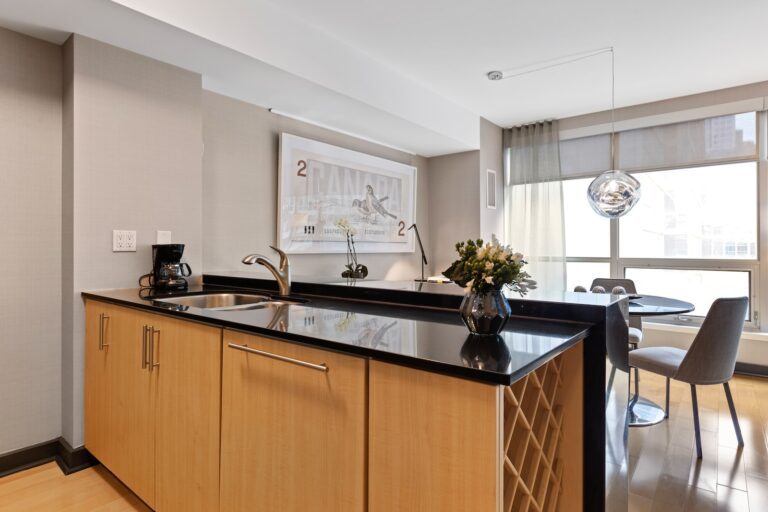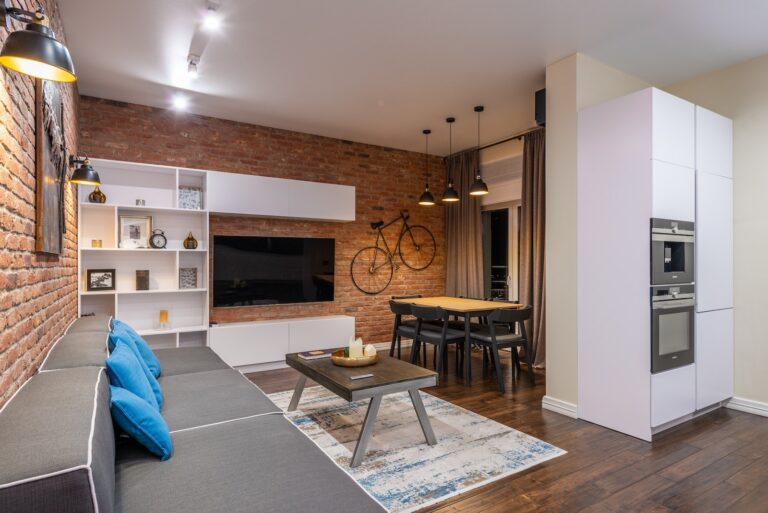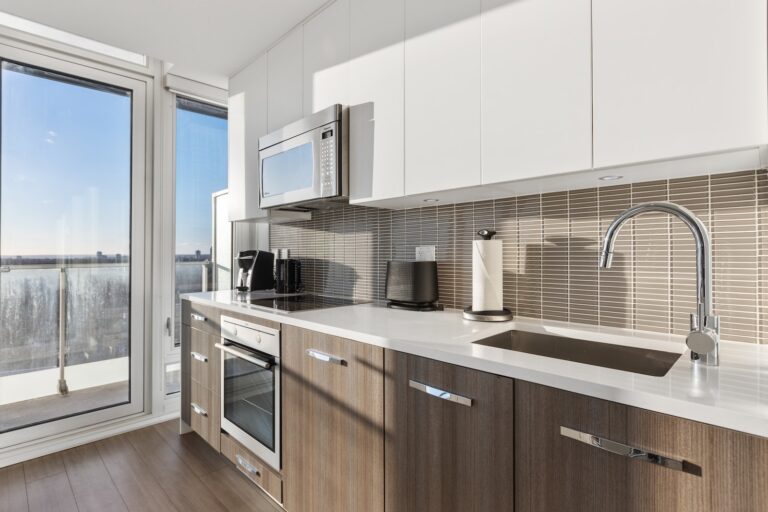How To Remove Mold From Kitchen Cabinets?
Mold is a common problem that can affect any area of your home, including your kitchen cabinets. Not only is it unsightly, but it can also pose health hazards to you and your family. However, removing mold from kitchen cabinets can be a daunting task, especially if you don’t know how to go about it. In this guide, we’ll show you some effective ways to get rid of mold from your kitchen cabinets and prevent it from coming back. So, let’s get started!
- Step 1: Mix equal parts white vinegar and water in a spray bottle.
- Step 2: Spray the affected area and let it sit for 5-10 minutes.
- Step 3: Scrub the area with a brush or sponge and rinse with water.
- Step 4: Dry the area thoroughly with a towel or fan.
- Step 5: Keep cabinets dry and well-ventilated to prevent mold from returning.

How To Remove Mold From Kitchen Cabinets: A Comprehensive Guide
Mold is a common problem in many households, and it can be particularly problematic in the kitchen. Mold can grow on kitchen cabinets due to moisture and humidity, which can lead to a musty smell and even health problems if left untreated. In this article, we will discuss how to remove mold from kitchen cabinets effectively.
Step 1: Identify the Type of Mold
Before you start cleaning, it is important to identify the type of mold you are dealing with. There are many different types of mold, and some can be more dangerous than others. You can identify mold by its color and texture. If you notice black, green, or white fuzzy patches on your kitchen cabinets, it is likely mold.
It is important to note that if the mold is widespread or toxic, it is best to call a professional mold remediation service.
Step 2: Gather Cleaning Supplies
To remove mold from kitchen cabinets, you will need the following supplies:
- Protective gloves and mask
- Bleach or vinegar
- Water
- Bucket
- Sponge or scrub brush
- Towel or cloth
Step 3: Prepare the Area
Before you start cleaning, it is important to prepare the area. Remove all items from the kitchen cabinets and place them in a safe location. Cover the surrounding area with plastic or newspaper to prevent bleach or vinegar from staining the surface.
Step 4: Mix the Cleaning Solution
Mix one part bleach or vinegar with two parts water in a bucket. If you are using bleach, make sure to open windows and doors for ventilation.
Step 5: Apply the Cleaning Solution
Dip a sponge or scrub brush into the cleaning solution and apply it to the moldy area. Make sure to cover all affected areas and let the solution sit for 10 to 15 minutes.
Step 6: Scrub the Cabinets
Using a scrub brush or sponge, scrub the moldy area vigorously. Make sure to remove all mold from the surface of the kitchen cabinets.
Step 7: Rinse the Cabinets
Rinse the cabinets thoroughly with water to remove any remaining cleaning solution. Use a towel or cloth to dry the surface of the cabinets.
Step 8: Prevent Future Mold Growth
To prevent future mold growth, it is important to keep your kitchen cabinets dry. Wipe down the cabinets regularly and fix any leaks or water damage promptly.
Step 9: Benefits of Removing Mold from Kitchen Cabinets
Removing mold from kitchen cabinets can improve the air quality in your home and prevent health problems. Mold can cause respiratory issues, allergies, and other health problems, so it is important to remove it as soon as possible.
Step 10: Mold vs. Mildew
Mold and mildew are both types of fungi that thrive in warm and humid environments. While they can look similar, there are some differences between the two. Mold is usually black, green, or white and has a fuzzy texture, while mildew is typically gray or white and has a powdery texture. Mold can also be more dangerous than mildew, so it is important to identify and remove it promptly.
In conclusion, removing mold from kitchen cabinets is essential for maintaining a healthy home. By following these steps and taking preventative measures, you can keep your kitchen cabinets mold-free and improve the air quality in your home.
Frequently Asked Questions
Here are some common questions people have about removing mold from kitchen cabinets:
What causes mold to grow on kitchen cabinets?
Mold grows in damp and humid environments, and kitchens are often prone to moisture from cooking and washing dishes. When moisture accumulates on kitchen cabinets, it creates the perfect conditions for mold to grow.
Other factors that can cause mold growth on kitchen cabinets include poor ventilation, low light, and the use of organic materials like wood or paper in cabinet construction.
Can mold on kitchen cabinets be harmful?
Yes, mold can be harmful to your health, especially if you have allergies or asthma. Exposure to mold can cause respiratory problems, skin irritation, and other health issues. It’s important to remove mold from your kitchen cabinets as soon as you notice it to avoid any potential health risks.
Additionally, mold can damage your cabinets and other surfaces over time if left untreated. It’s best to act quickly to remove mold and prevent it from spreading.
How can I prevent mold from growing on my kitchen cabinets?
The best way to prevent mold growth on kitchen cabinets is to keep them dry and well-ventilated. Make sure to wipe up any spills or moisture on your cabinets immediately, and use a dehumidifier or fan to reduce humidity levels in your kitchen.
You can also consider using mold-resistant materials for your cabinets, such as metal or plastic, or painting your cabinets with a mold-resistant paint.
What tools and materials do I need to remove mold from kitchen cabinets?
You’ll need a few basic supplies to remove mold from your kitchen cabinets, including a face mask or respirator, gloves, a scrub brush, a bucket, and a solution of water and either vinegar or bleach. Make sure to follow the instructions on the cleaning product you choose, and wear protective gear to avoid inhaling any mold spores.
Additionally, you may need to use a mold-killing primer or paint to prevent mold from returning to your cabinets after cleaning.
What’s the best way to clean mold from kitchen cabinets?
The best way to clean mold from kitchen cabinets depends on the severity of the mold growth and the type of cabinets you have. For minor mold growth, you can create a solution of equal parts water and vinegar, or use a commercial mold-killing cleaner. Apply the solution to the affected area and scrub with a brush, then rinse with water and dry thoroughly.
For more severe mold growth, you may need to remove and replace the affected cabinets or hire a professional mold remediation service to properly clean and treat the area.

Cabinets Around the House : How to Remove Mold From Wood Cabinets
In conclusion, mold on kitchen cabinets is a common problem that can be easily resolved with the right techniques. It’s important to take action as soon as possible to prevent further damage to your cabinets and potential health risks. By following the steps outlined in this guide, you can effectively remove mold from your kitchen cabinets and keep them looking clean and healthy for years to come.
Remember to always wear protective gear, such as gloves and a mask, when dealing with mold to prevent any potential health hazards. Additionally, it’s important to address the underlying cause of the mold growth, such as excess moisture or poor ventilation, to prevent it from recurring in the future.
Regular cleaning and maintenance of your kitchen cabinets can also help prevent mold growth. By keeping them dry and well-ventilated, you can reduce the risk of mold and ensure that your cabinets remain in good condition. With these tips, you can effectively remove mold from your kitchen cabinets and maintain a healthy and hygienic home.






